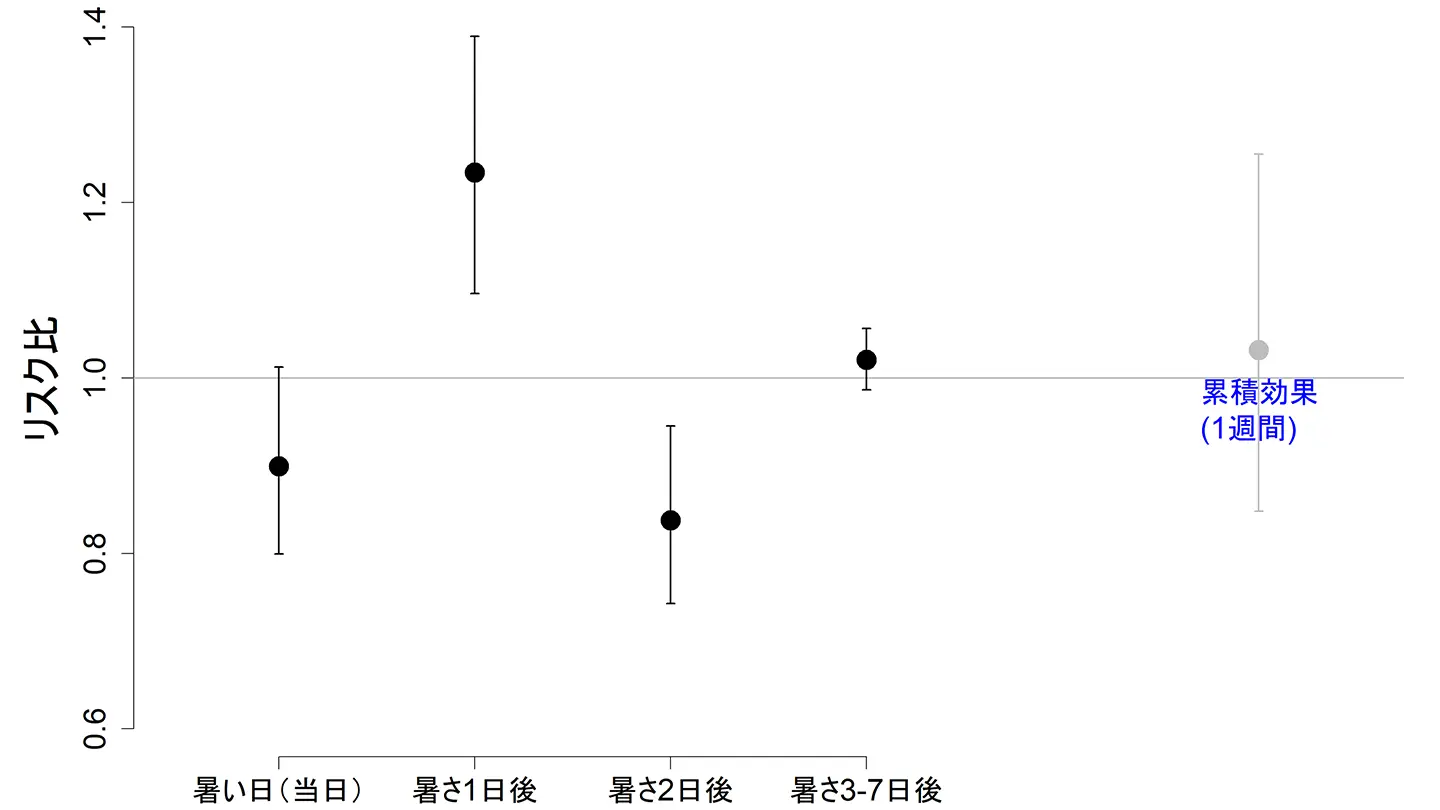2025-05-21 東京科学大学
 図 暑さ指数95パーセンタイル以上の暑い日と常位胎盤早期剥離のリスク
図 暑さ指数95パーセンタイル以上の暑い日と常位胎盤早期剥離のリスク
<関連情報>
- https://www.isct.ac.jp/ja/news/ligppsp0ryzk
- https://www.isct.ac.jp/plugins/cms/component_download_file.php?type=2&pageId=&contentsId=1&contentsDataId=1580&prevId=&key=c8eac5a26fda93191b742f27194b67c2.pdf
- https://obgyn.onlinelibrary.wiley.com/doi/10.1111/1471-0528.18163
熱ストレスと胎盤剥離: 時空間層別ケースクロスオーバー研究 Heat Stress and Placental Abruption: A Space–Time Stratified Case-Crossover Study
Shuhei Terada, Hisaaki Nishimura, Naoyuki Miyasaka, Takeo Fujiwara
BJOG: An International Journal of Obstetrics & Gynaecology Published: 10 April 2025
DOI:https://doi.org/10.1111/1471-0528.18163
ABSTRACT
Objective
To examine whether heat stress, measured by wet bulb globe temperature (WBGT), a comprehensive heat stress index is associated with placental abruption within 7 days.
Design
A space–time-stratified case-crossover design.
Setting
All 11 regions in Japan during the warm season (June–September) from 2011 to 2020.
Population
6947 cases of placental abruption were registered in the Japan Perinatal Registry Network database.
Methods
Quasi-Poisson regression with distributed lag linear models assessed the association between heat stress, defined as daily maximum WBGT exceeding the 95th percentile of the regional distribution during the warm season, and daily placental abruption cases over a lag period of 0–7 days. Stratified analyses examined gestational week (preterm vs. term), hypertensive disorders of pregnancy (HDP), and small for gestational age (SGA).
Main Outcome Measures
Clinical diagnosed placental abruption.
Results
Heat stress was associated with an increased risk of placental abruption on lag 1 (relative risk [RR]: 1.23, 95% confidence interval [CI]: 1.11–1.39) and lower risk on lag 2 (RR: 0.84, 95% CI: 0.74–0.95), with negligible cumulative risk over lag 0–7 due to counterbalancing effects. Similar patterns were observed in preterm and term pregnancies. Individuals with HDP showed a higher risk on lag 1 (RR: 1.57, 95% CI: 1.31–1.88), as did those with SGA infants (RR: 1.47, 95% CI: 1.26–1.73).
Conclusions
Heat stress during pregnancy may increase the risk of placental abruption on the day after exposure, potentially advancing cases that might have occurred later, particularly in individuals with HDP or SGA infants.


